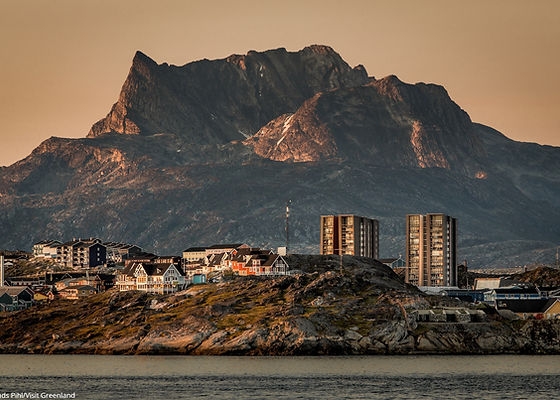Greenland, at the time, was a Danish colony. Denmark had been occupied by Nazi Germany. The Danish government was in exile, making Greenland vulnerable. The U.S. needed to act fast.
In 1941, President Franklin D. Roosevelt sent a request to Denmark’s exiled government. He offered to protect Greenland in exchange for military bases. The Danish government, in a difficult position, agreed.
The U.S. quickly built airfields and radar stations on Greenland. They established a military presence that would help protect the Western Hemisphere. The base at Thule became one of the most important during the Cold War.
As time passed, the U.S. maintained control of its bases in Greenland. The Cold War made Greenland even more vital. It became a key location for monitoring Soviet activity.
In the 1950s, the U.S. and Denmark signed an agreement. It allowed the U.S. to use Greenland for military purposes. The bases remained, and Greenland became a quiet, but crucial, part of the Cold War strategy.
Over the years, Greenland’s status has been a subject of debate. The Danish government still officially controls the island, but Greenland has gained more autonomy. The U.S. presence, however, continues, and the strategic importance of the island remains unchanged.
The U.S. occupation of Greenland wasn’t an occupation in the traditional sense. It was an arrangement based on military need during a time of global uncertainty. It was a step toward securing the U.S. and its allies from potential threats.
The U.S. still maintains a military presence there today, despite the island’s changing political landscape. Greenland's vast, remote landscape still serves as a critical piece in global defense strategies. Even though it has largely faded from the headlines, Greenland remains one of the most important locations on Earth.
Greenland's geographic position is vital. It overlooks key shipping lanes. The Northern Sea Route is becoming more accessible. This route connects Asia and Europe. It offers a shorter path than traditional routes. The Northwest Passage may also become viable.
These new routes have significant implications. They can reduce shipping times and costs. They also present security concerns. Control over these routes will be strategically valuable. Greenland's location provides an advantage.
The melting ice also reveals natural resources. Greenland possesses vast reserves of minerals. Oil and gas deposits may also be present. These resources are attracting global interest. Competition for access is likely to intensify.
Several nations are focusing on the Arctic. Russia has a significant presence in the region. They are investing in military infrastructure. China also has growing ambitions in the Arctic. Their activities raise concerns for some nations.
The United States has a long history with Greenland. During World War II, the US established a presence. This was to prevent Axis powers from gaining a foothold. After the war, this presence continued. It was crucial during the Cold War.
Thule Air Base is a key US military installation. It is located in northern Greenland. This base has played a vital role for decades. It serves as a missile early warning site. It also tracks objects in space.
The strategic importance of Thule Air Base cannot be overstated. It provides crucial intelligence and monitoring capabilities. It is part of a global network of defense systems. Its location in Greenland is particularly advantageous.
The US military presence in Greenland offers several benefits. It allows for monitoring of the Arctic region. It provides early warning of potential threats. It also enhances the ability to project power. This is important for maintaining stability.
Surveillance capabilities are critical in the Arctic. The US presence allows for tracking of naval and air activities. This helps to maintain situational awareness. It also deters potential adversaries.
Early warning systems at Thule Air Base are essential. They can detect missile launches from across the globe. This provides valuable time for response. It is a key component of strategic deterrence.
The ability to project power is also important. While not a primary function in Greenland, the location allows for potential deployment. This can be crucial in times of crisis. It demonstrates US commitment to the region.
Operating in the Arctic presents unique challenges. The harsh climate is a significant factor. Extreme cold and long periods of darkness make operations difficult. Logistical support can also be complex and costly.
Cooperation with Denmark is essential for the US presence in Greenland. Denmark has sovereignty over the island. The US operates under agreements with the Danish government. This partnership is crucial for the continued presence.
The interests of the local Inuit population are also important. Any military activities must consider their well-being and traditions. Respect for their culture and way of life is paramount. Engagement with the local community is necessary.
The changing world necessitates a reevaluation of strategic priorities. The Arctic is becoming increasingly important. The US military presence in Greenland needs to adapt to these changes. This may involve modernization of facilities. It could also mean increased cooperation with allies.
The future of the Arctic is uncertain. Climate change will continue to reshape the region. Competition for resources and influence is likely to grow. The strategic importance of Greenland will only increase.
Maintaining a strong US military presence in Greenland is vital. It ensures national security in a changing world. It allows for monitoring of a critical region. It also provides a platform for future engagement.
In conclusion, Strategic Greenland remains a key element of US defense policy. Its geographic location and the changing global landscape underscore its importance. The US military presence there is crucial for maintaining security and stability in the Arctic and beyond. Continued investment and attention to this strategic location are essential.







Social Plugin